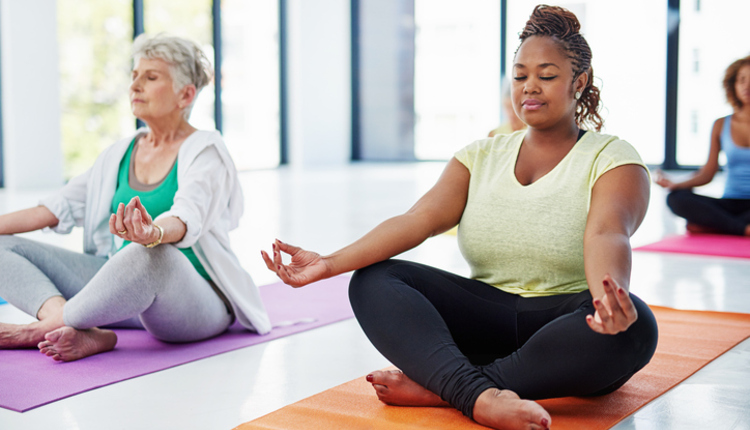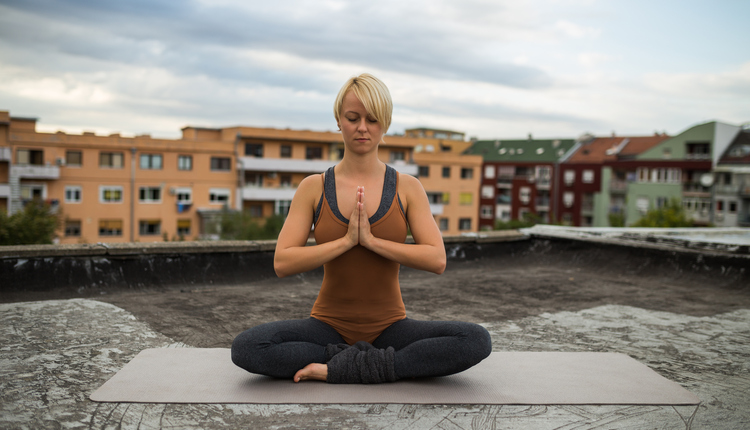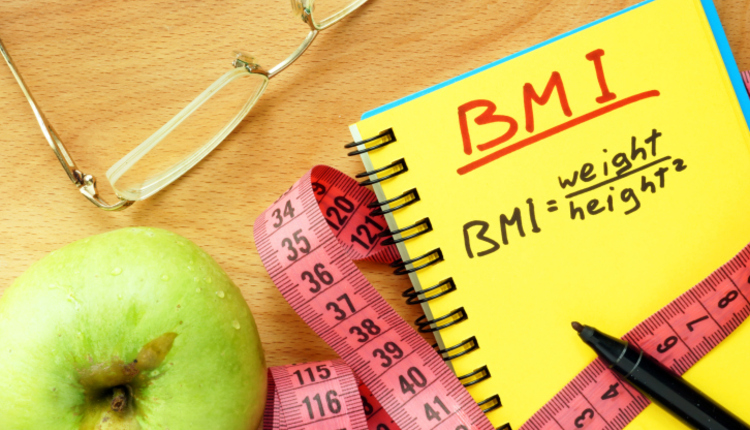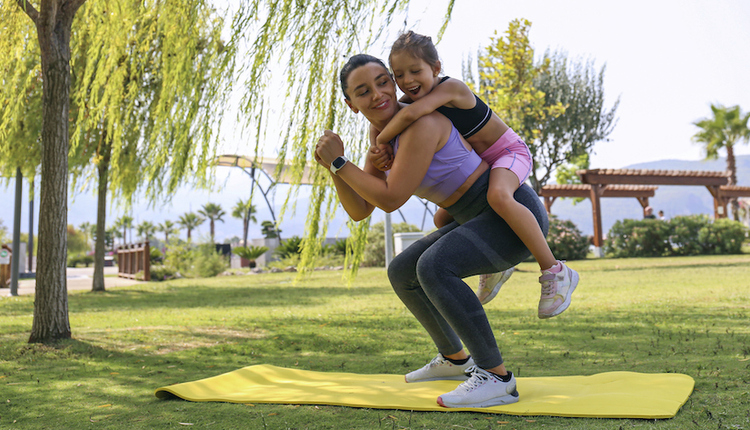
The ancient practice of meditation is as integral to yoga as the poses, with the same intention: not to tune-out, but to tune-in to a frequency long forgotten, or perhaps undiscovered. Meditation is about becoming acutely aware of what is going on within you, as well as learning to tame your mind so you can focus all your energy and awareness on the task at hand. The practice of meditation helps you stay centered regardless of your circumstances. It doesn't teach you to avoid pain or discomfort, but to experience and accept it so you can move through any situation with profound clarity and a sense of inner peace and calm. It's a wonderful way to tap into your internal "knowingness"â and get into touch with your eternal essence. Just like learning the breathing techniques and poses, meditation is at first awkward and unfamiliar. It's eye-opening to discover we are controlled by incessant thoughts, and frustrating to realize that many of them are unnecessary and perhaps even untrue! Sitting in silence we also realize how many common distractions compete for our attention, such as doubt, sleepiness and restlessness. Rather than using up even more energy fighting these hindrances, we eventually realize it's far easier to acknowledge them and release them. Distractions will never let up, but you can teach yourself to let them go. In fact, this awareness of your thought life and distractions is the first step in developing a successful meditation practice that will improve your physical and mental wellbeing.
Furthermore, when you refine your ability to slip into a state of awareness and being, you can bring this focus into other areas of your life. No matter what is happening in your immediate environment, you can step back and respond, versus react. Whether it's an athletic competition, work, a difficult conversation or play, not only will you enjoy what you are doing that much more, you will do it that much better.
So give yourself permission to be a beginner, and know that with practice your ability to concentrate will improve. Eventually, you will find that during your meditation practice you will have the experience of slipping between thoughts, or find yourself unaware of any specific thoughts at all. In this place, you not only lose track of what you hear going on around you, you often discover you've lost all sense of time itself. With enough practice, you will find that you can meditate in a noisy airport or on a busy street corner without becoming distracted. Practicing meditation helps us to slow our breath, quiet our mind and take time to find peace and can be beneficial physically, mentally and emotionally. Meditation is now more commonly used to treat mental health disorders, addiction and everyday stress, as well as to heal physical issues and promote better sleep.
Among the many benefits, here are six compelling benefits to share with your clients or for yourself:
1. Increased immunity Relaxation appears to boost immunity in recovering cancer patients. A study at the Ohio State University found that progressive muscular relaxation, when practiced daily, reduced the risk of breast cancer recurrence. In another study at Ohio State, a month of relaxation exercises boosted natural killer cells in the elderly, giving them a greater resistance to tumors and viruses.
2. Emotional balance Emotional balance means to be free of all the neurotic behavior that results from the existence of a tortured and traumatized ego. This is very hard to achieve fully, but meditation certainly is the way to cure such neurosis and unhealthy emotional states. As one's consciousness is cleansed of emotionally soaked memories, not only does great freedom abound, but also great balance.
3. Increased focus and concentration
Mediation gives us increased prefrontal cortex functioning. The continual practice of sitting to meditate gives us structure, discipline and the ability to concentrate.
4. Lowered blood pressure
A study at Harvard Medical School found that meditation lowered blood pressure by making the body less responsive to stress hormones, in a similar way to blood pressure-lowering medication. A British Medical Journal report also found that patients trained how to relax had significantly lower blood pressure.
5. Anti-inflammatory Stress leads to inflammation, a state linked to heart disease, arthritis, asthma and skin conditions such as psoriasis, say researchers at Emory University in the U.S. Relaxation can help prevent and treat such symptoms by switching off the stress response. In this way, one study at McGill University in Canada found that meditation clinically improved the symptoms of psoriasis.
6. Calmness The simple difference between those who meditate and those who do not is that for a meditative mind the thought occurs but is witnessed, while for an ordinary mind, the thought occurs and is the boss. So in both minds, an upsetting thought can occur, but for those who meditate it is just another thought.
There are many different meditation traditions and techniques. Westerners, used to fast-paced living and constant information exchange, often benefit more from active meditation techniques. Active meditation involves focusing our thoughts and awareness on a particular thought, idea, visualization or concept. Choosing to focus our mind on something positive can help us to rid our minds of all negative thoughts, negative emotions and other clutter.
The following steps will help you establish a personal active meditation practice:
1. Commit to practicing your meditation for at least 10 minutes (or whatever time you have available) every day. It is helpful to set an alarm so you don't have to keep one eye on the clock. To help make your meditation practice a habit, practice at the same time each day, or immediately after your pose/yoga practice. Finally, if you have room in your home, establish a special place to sit and meditate. Even if it's as simple as placing a chair in a corner near a favorite window, or a cushion surrounded by a few of your favorite candles, create a sacred space. Knowing you have somewhere you love to go will help you get there.
2. Sit in a comfortable position with your spine straight, be it in a chair, on a cushion or directly on the floor. If you are not comfortable, you will be distracted. If you are practicing before or after your workout, roll up your mat and sit on it, as elevating your hips can ease tension in the hips and hamstrings and improve circulation to your legs when sitting for long periods.
3. Use Relaxation Breath. Sitting upright with a neutral spine, relax your abdomen and breathe quietly without forcing your exhalations. Take the same amount of time for both inhale and exhale, consciously beginning your inhale just as your exhale ends. The abdominal muscles must be unrestrained by tension or clothing and completely free to move.
4. Select one of the following techniques. If the technique you choose doesn't work, let it go and choose something else.
- Choose a mantra (word or phrase), thought or feeling on which to meditate. Repeat it over and over in rhythm with your breath. If your first choice leads to negative thoughts or feelings, let it go and choose something else. For example, a commonly used mantra and source of all mantras is (pronounced Aaaaaah Uoooo Mmmmmm), which represents the root of all sounds that are ever-present as vibrations in our bodies.
- Visualize an object or place in which you find peace, such as a lotus blossom or quiet beach.
- If preparing for a performance or competition of any kind, visualize yourself succeeding incorporating all your senses as you mentally act out the scenario.
- Use a guided meditation. There are many such meditations available on CD. Relax and fully listen to each word.
- Use an affirmation card with a phrase that inspires or strengthens you. There are many books now available with positive affirmations as well as boxed card sets. Or, make your own.
- Focus on a small, meaningful object held in your hand or placed in front you.
When complete, journal about your experience so you can keep track of your progress. For example, write down any techniques you tried and what you experienced practicing them. What were your thoughts and feelings before, during and after meditating? Also, note if your practice revealed any solutions to questions or situations you've struggled to resolve. Finally, keep track of the benefits that you notice from incorporating meditation into your yoga practice. These will become incentives to continue!
How do you know if you are actually meditating successfully? Different people describe this meditative state in different ways. Some see a single source of light, some see themselves from a distance, while others see images or even sense colors. Some people simply see or feel nothing that they can express with words. Often times you will experience a wonderful state of "beingness," an inner glow of warmth and peace. All of these experiences are successful. Just as there is no "right" version of a yoga pose, there is no "right"â way to meditate.
As you begin to explore meditation and the meditation techniques remember that every day is different, every practice is different and we are constantly faced with new struggles and challenges. Yet, our inner truth remains the same; we only need to look within.
Beth Shaw is the creator and president of YogaFit Training Systems and has dedicated her life to YogaFit and the transformational growth that the company creates globally. Shaw is the entrepreneurial innovator behind numerous fitness trends and the two editions of her first book, YogaFit, have sold over 60,000 copies. www.yogafit.com
Furthermore, when you refine your ability to slip into a state of awareness and being, you can bring this focus into other areas of your life. No matter what is happening in your immediate environment, you can step back and respond, versus react. Whether it's an athletic competition, work, a difficult conversation or play, not only will you enjoy what you are doing that much more, you will do it that much better.
So give yourself permission to be a beginner, and know that with practice your ability to concentrate will improve. Eventually, you will find that during your meditation practice you will have the experience of slipping between thoughts, or find yourself unaware of any specific thoughts at all. In this place, you not only lose track of what you hear going on around you, you often discover you've lost all sense of time itself. With enough practice, you will find that you can meditate in a noisy airport or on a busy street corner without becoming distracted. Practicing meditation helps us to slow our breath, quiet our mind and take time to find peace and can be beneficial physically, mentally and emotionally. Meditation is now more commonly used to treat mental health disorders, addiction and everyday stress, as well as to heal physical issues and promote better sleep.
Among the many benefits, here are six compelling benefits to share with your clients or for yourself:
1. Increased immunity Relaxation appears to boost immunity in recovering cancer patients. A study at the Ohio State University found that progressive muscular relaxation, when practiced daily, reduced the risk of breast cancer recurrence. In another study at Ohio State, a month of relaxation exercises boosted natural killer cells in the elderly, giving them a greater resistance to tumors and viruses.
2. Emotional balance Emotional balance means to be free of all the neurotic behavior that results from the existence of a tortured and traumatized ego. This is very hard to achieve fully, but meditation certainly is the way to cure such neurosis and unhealthy emotional states. As one's consciousness is cleansed of emotionally soaked memories, not only does great freedom abound, but also great balance.
3. Increased focus and concentration
Mediation gives us increased prefrontal cortex functioning. The continual practice of sitting to meditate gives us structure, discipline and the ability to concentrate.
4. Lowered blood pressure
A study at Harvard Medical School found that meditation lowered blood pressure by making the body less responsive to stress hormones, in a similar way to blood pressure-lowering medication. A British Medical Journal report also found that patients trained how to relax had significantly lower blood pressure.
5. Anti-inflammatory Stress leads to inflammation, a state linked to heart disease, arthritis, asthma and skin conditions such as psoriasis, say researchers at Emory University in the U.S. Relaxation can help prevent and treat such symptoms by switching off the stress response. In this way, one study at McGill University in Canada found that meditation clinically improved the symptoms of psoriasis.
6. Calmness The simple difference between those who meditate and those who do not is that for a meditative mind the thought occurs but is witnessed, while for an ordinary mind, the thought occurs and is the boss. So in both minds, an upsetting thought can occur, but for those who meditate it is just another thought.
There are many different meditation traditions and techniques. Westerners, used to fast-paced living and constant information exchange, often benefit more from active meditation techniques. Active meditation involves focusing our thoughts and awareness on a particular thought, idea, visualization or concept. Choosing to focus our mind on something positive can help us to rid our minds of all negative thoughts, negative emotions and other clutter.
The following steps will help you establish a personal active meditation practice:
1. Commit to practicing your meditation for at least 10 minutes (or whatever time you have available) every day. It is helpful to set an alarm so you don't have to keep one eye on the clock. To help make your meditation practice a habit, practice at the same time each day, or immediately after your pose/yoga practice. Finally, if you have room in your home, establish a special place to sit and meditate. Even if it's as simple as placing a chair in a corner near a favorite window, or a cushion surrounded by a few of your favorite candles, create a sacred space. Knowing you have somewhere you love to go will help you get there.
2. Sit in a comfortable position with your spine straight, be it in a chair, on a cushion or directly on the floor. If you are not comfortable, you will be distracted. If you are practicing before or after your workout, roll up your mat and sit on it, as elevating your hips can ease tension in the hips and hamstrings and improve circulation to your legs when sitting for long periods.
3. Use Relaxation Breath. Sitting upright with a neutral spine, relax your abdomen and breathe quietly without forcing your exhalations. Take the same amount of time for both inhale and exhale, consciously beginning your inhale just as your exhale ends. The abdominal muscles must be unrestrained by tension or clothing and completely free to move.
4. Select one of the following techniques. If the technique you choose doesn't work, let it go and choose something else.
- Choose a mantra (word or phrase), thought or feeling on which to meditate. Repeat it over and over in rhythm with your breath. If your first choice leads to negative thoughts or feelings, let it go and choose something else. For example, a commonly used mantra and source of all mantras is (pronounced Aaaaaah Uoooo Mmmmmm), which represents the root of all sounds that are ever-present as vibrations in our bodies.
- Visualize an object or place in which you find peace, such as a lotus blossom or quiet beach.
- If preparing for a performance or competition of any kind, visualize yourself succeeding incorporating all your senses as you mentally act out the scenario.
- Use a guided meditation. There are many such meditations available on CD. Relax and fully listen to each word.
- Use an affirmation card with a phrase that inspires or strengthens you. There are many books now available with positive affirmations as well as boxed card sets. Or, make your own.
- Focus on a small, meaningful object held in your hand or placed in front you.
When complete, journal about your experience so you can keep track of your progress. For example, write down any techniques you tried and what you experienced practicing them. What were your thoughts and feelings before, during and after meditating? Also, note if your practice revealed any solutions to questions or situations you've struggled to resolve. Finally, keep track of the benefits that you notice from incorporating meditation into your yoga practice. These will become incentives to continue!
How do you know if you are actually meditating successfully? Different people describe this meditative state in different ways. Some see a single source of light, some see themselves from a distance, while others see images or even sense colors. Some people simply see or feel nothing that they can express with words. Often times you will experience a wonderful state of "beingness," an inner glow of warmth and peace. All of these experiences are successful. Just as there is no "right" version of a yoga pose, there is no "right"â way to meditate.
As you begin to explore meditation and the meditation techniques remember that every day is different, every practice is different and we are constantly faced with new struggles and challenges. Yet, our inner truth remains the same; we only need to look within.
Beth Shaw is the creator and president of YogaFit Training Systems and has dedicated her life to YogaFit and the transformational growth that the company creates globally. Shaw is the entrepreneurial innovator behind numerous fitness trends and the two editions of her first book, YogaFit, have sold over 60,000 copies. www.yogafit.com













